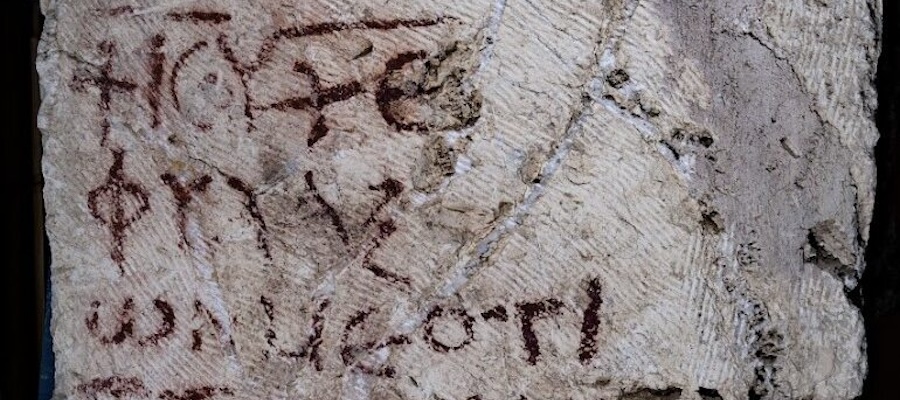Participants
Conflicting Approaches to Late Antique Epigraphy 1: The Byzantine East (Session 1004)
Rachael Helen Banes (Austrian Academy of Sciences)
Organizer and panelist
Using Graffiti to Reconstruct the Early Byzantine Inscription as Text and Image
Debates surrounding literacy and visuality have fuelled conflicting interpretations of early Byzantine epigraphy: are inscriptions text, or image? Should the audiences of these inscriptions be considered “readers” or “viewers”? Attempts to solve this crisis have traditionally focused on the inscriptions themselves, rather than their audience. This paper will shift focus, instead examining the debate through the lens of informal responses to formal epigraphy – the ways late antique peoples mimicked features of commissioned inscriptions in graffiti. In doing so, I will show that textual and visual aspects of epigraphy were not in conflict with one another, but instead worked in tandem.
Becca Grose (Universität Tübingen/University of York)
Conflicting Ideas of Epigraphic (In)Visibility at Shared Byzantine Cult Sites
When inscriptions in different languages are found in different spaces at late-antique cultic sites, this is often interpreted as evidence for different uses of holy space. Here, I consider another factor: different traditions of viewing inscriptions. Across the early-medieval Mediterranean, inscriptions placed at the same height were considered readable in some regions whereas invisible in others. I suggest that similar expectations of what rendered a text (in)visible to viewers also shaped different epigraphic distributions in Eastern Mediterranean cultic spaces. From this, I conclude that we may need to nuance our understanding of whether subsequent uses necessarily conflicted with existing practices.
Grace Stafford (University of Vienna)
Epigraphic Methods for Gendering Monastic Space: Problems and Possibilities
The development of robust archaeological methods for gendering space is notoriously difficult. Yet the absence of such methods is deeply problematic: without explicit evidence for women, many spaces are defined as male by default, rather than through critical analysis. This problem is particularly acute in the field of early Byzantine monastic archaeology, where shockingly few women’s communities have been positively identified. This paper explores the potential of epigraphy to provide new approaches for gendering monastic space. It challenges embedded assumptions about the nature of inscriptions and graffiti found in monasteries and presents new possibilities raised by conflicting readings.
Alice Van den Bosch (University of Exeter)
Session moderator
Breaking Points: Reaction to Change in Byzantine Art & Literature, 10th—13th c. CE (Session 1143)
Armin Bergmeier (Universität Leipzig)
Creating Continuity in the Face of Change: Seljuk Anatolia and Frankish Morea in the Thirteenth Century
In the past, scholars have defined progress in Byzantine culture as static and unchanging. This paper reevaluates modern notions of change as a transformation that breaks with the past and is directed towards the future. By contrast, premodern change was often understood as a return to a previous state. Focusing on the use and display of spolia, this paper will trace how the reaction to fundamental change – the political takeover of large parts of Anatolia by the Seljuks and in the Frankish-ruled Morea – found expression in novel architectural forms, accompanied by striking displays of spolia on newly erected buildings.
Joseph Kopta (Temple University)
Co-organizer and panelist
When the Ink Runs Dry: Limitations as Opportunity in Middle Byzantine Manuscript Production
What do Byzantine manuscript makers do when access to materials —metals, fine pigments, and supports such as parchment — becomes limited? In the twelfth and thirteenth centuries, some bookmakers substituted materials that mimicked others, overcoming a ‘crisis’ of availability. Past scholars have sometimes described such manuscripts as ‘provincial,’ or placed them at the periphery of an imagined center of production.
This paper will present data from existing Middle Byzantine manuscripts that precisely identify materials, along with select colophons describing manuscript restoration. It will demonstrate that the priority for manuscript makers was not the veracity of a material, but its intended affect.
Ugo Mondini (University of Oxford)
Co-organizer and panelist
Where Teachers See Crisis: Learning from Errors and Exceptions in Greek Poetry, 10th–12th c.
Middle-Byzantine teachers criticized their peers for poor grammatical teaching and bemoaned the quality of contemporary literature, lamenting a crisis in education. This fact naturally had the purpose of highlighting their relevance in society, but it also reveals deeper cultural shifts when analyzed in depth.
This paper examines forms of Middle Byzantine literature. By comparing evidence from grammarians and a selected number of anonymous epigrams, errors and exceptions will be used to uncover changes in literary language and in poetic composition between the 10th – 12th c., and to understand the sense of ‘crisis’ that pervaded some bespectacled teachers.
Flavia Vanni (Newcastle University)
Session moderator
